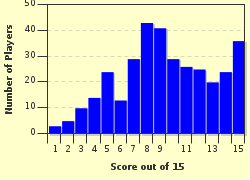Quiz Answer Key and Fun Facts
1. The Risk-Return Trade Off principle means that the higher risk yields what effect on return?
2. Who are given a preference to the corporation's distribution of assets, earnings and dividends?
3. Copyrights, goodwill, and patents are part of what specific non-current asset?
4. What is the basic accounting equation?
5. What do you call the relevant risk that reflects the total market returns and cannot be eliminated by diversification?
6. CAPM formula is used theoretically to compute the risky asset's expected or required rate of return. What does 'P' means in CAPM?
7. Which of the following financial statements reflects the company's financial position at a point in time?
8. Which of the following financial ratios is not a liquidity ratio?
9. Which of the following is both an advantage and disadvantage of a corporation?
10. What are the three main functions of an investment banker?
11. What do you call the process when the firm issues securities directly to investors or small group of institutions?
12. Which of the following is a type of government securities that are non-interest bearing and have short-term maturity?
13. Sales, cost of sales, utilities expense, and depreciation expense is recorded in what financial statement?
14. What type of security is determined by YTM or yield to maturity?
15. You might have encountered the word 'NASDAQ' while watching news in television. What does the acronym NASDAQ mean?
Source: Author
tobertz_20
This quiz was reviewed by FunTrivia editor
trident before going online.
Any errors found in FunTrivia content are routinely corrected through our feedback system.

